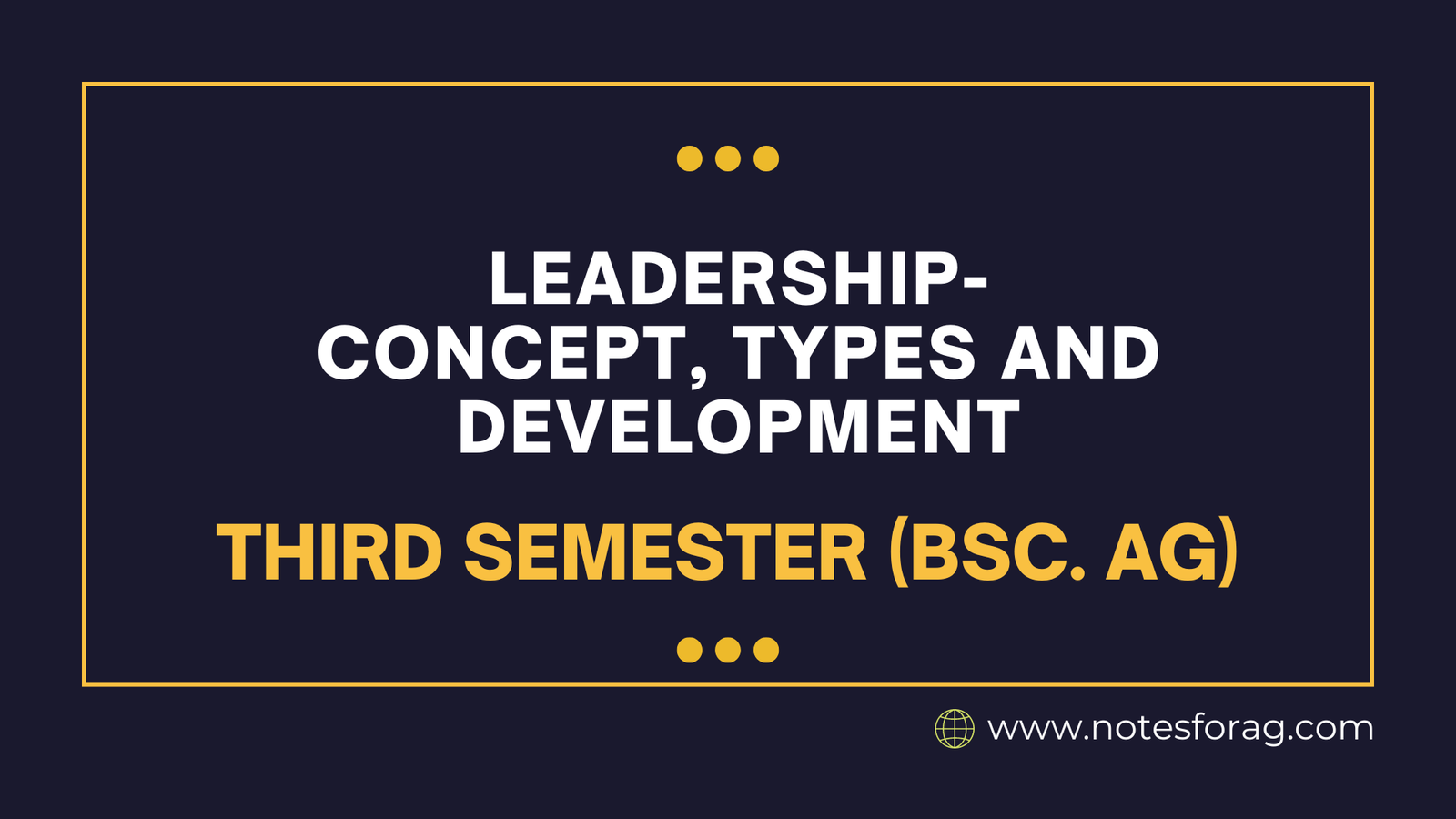Leadership is the ability to guide, motivate, and persuade others toward a common objective. A leader is someone who guides and motivates people to achieve a common objective, and they play an important role in determining the direction and success of a team or organization. Leaders can take many different shapes, including authoritarian, democratic, laissez-faire, transformational, transactional, and servant leaders, each with their own style to decision-making and motivation. Leadership development is the process of improving an individual’s ability to lead through training, mentoring, experience learning, and ongoing self-improvement, resulting in effective and adaptable in a variety of circumstances.
Table of Contents
The Basic Concept of Leadership
Leadership is an important concept that influences both individual and organizational performance. At its foundation, it is described as the ability to influence and direct others toward a common objective. This influence could be attributed to attributes such as vision, empathy, decisiveness, and honesty. Effective leaders have the ability to inspire people, instilling trust and dedication while creating a climate conducive to collaboration and innovation.
It is critical to separate it from management. While both roles are important in an organizational environment, they focus on different aspects of team leadership. Management frequently stresses planning, organizing, and coordinating resources to achieve certain goals. It is more about inspiring and encouraging individuals to achieve to the best of their abilities and aligning their personal ambitions with the organization’s overall vision. A leader creates an environment in which team members feel empowered and respected, allowing them to reach their full potential and contribute effectively to corporate goals.
Types of Leadership Styles
Leadership styles have a significant impact on team dynamics and organizational effectiveness. Understanding the subtleties of different methods enables leaders to tailor their style to the needs of their business and team members. This section looks at five major styles: authoritarian, democratic, transformational, transactional, and servant leadership.
1. Autocratic Leaders:
- Decision-Making: Centralized; the leader takes decisions alone.
- Characteristics: The commands are authoritative, commanding, and explicit.
- Advantages: Quick decision-making with clear expectations.
- Challenges: Can result in low morale and a lack of inventiveness among team members.
2. Democratic leaders:
- Decision-Making: Inclusive; decisions are made based on group feedback.
- Characteristics: Collaborative, participative, and transparent communication.
- Advantages: Increased morale, inventiveness, and team buy-in.
- Challenges: This might be time-consuming and lead to indecision.
3. Laissez-Faire Leaders:
- Decision-Making: Hands-off; team members are allowed to make decisions.
- Characteristics: Trusting, non-interfering, and delegative.
- Advantages: Promotes independence and inventiveness.
- Challenges: Can result in a lack of direction and accountability.
4. Transformative Leaders:
- Focus: Inspires and drives people to accomplish remarkable results.
- Characteristics: Visionary, motivating, and change-oriented.
- Advantages: High levels of involvement, innovation, and loyalty.
- Challenges: Can be overpowering, and practicality may be overlooked.
5. Transactional Leaders:
- Focus: Based on a system of punishment and reward.
- Characteristics: Task-oriented, systematic, and performance-focused.
- Advantages: Clear expectations are effective in meeting short-term goals.
- Challenges: May not provide long-term inspiration or creativity.
6. Servant Leaders:
- Focus: Prioritizes the needs of others, particularly teammates.
- Characteristics: Empathetic, ethical, and supportive.
- Advantages: Strengthens community, trust, and loyalty.
- Challenges: In times of crisis, you may have difficulty asserting yourself and making decisions.
Leadership Development
It is the process of improving one’s ability to lead and manage others successfully. It uses a variety of tactics, including:
1. Training and education:
- Formal programs, workshops, and courses for developing leadership qualities.
- Concentrate on communication, decision-making, dispute resolution, and strategic planning.
2. Mentoring and coaching:
- Pairing inexperienced leaders with seasoned mentors.
- Coaching encourages personal and professional development through feedback and direction.
3. Experiential learning:
- Learning through practical experience, such as leading projects or teams.
- Opportunities to practice leadership skills in real-world scenarios.
4. Self-assessment and reflection:
- Tools include 360-degree feedback, personality evaluations, and reflective journaling.
- Helps leaders identify their own strengths, limitations, and areas for progress.
5. Succession Planning:
- Identifying and developing future leaders in an organization.
- Maintains leadership continuity and facilitates smooth transitions.
6. Continuous Learning:
- Encouraging leaders to keep up with industry developments, best practices, and emerging leadership theories.
- Continued development through reading, seminars, and networking.
Leadership development is critical for developing effective leaders who can negotiate complicated challenges, motivate their teams, and propel organizations forward.
Frequently Asked Questions
What is leadership development?
Leadership development is the process of enhancing a person’s capacity to lead successfully. This includes training, mentoring, experience learning, and ongoing self-evaluation, all aimed at improving leadership skills and preparing leaders for future problems.
What is a leader?
A leader is someone who guides, influences, and motivates a group of people to accomplish a common goal. Leaders have an important role in establishing direction, making decisions, and inspiring people to collaborate for success.
Related Articles

